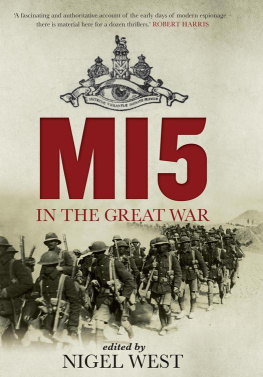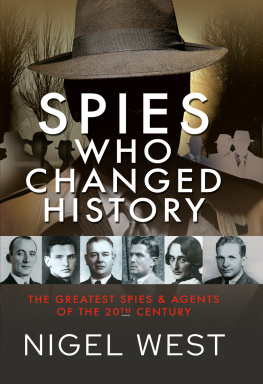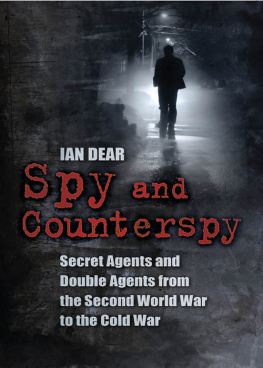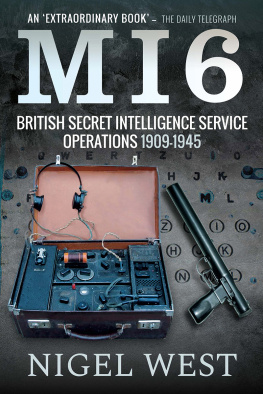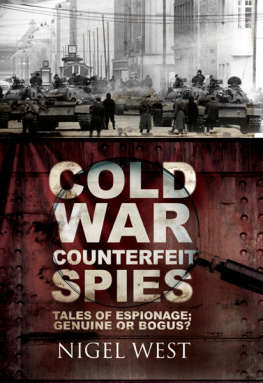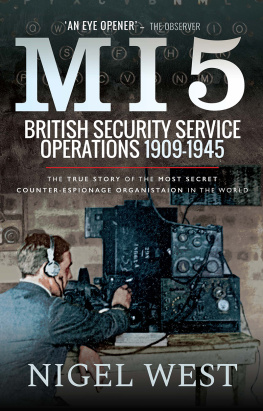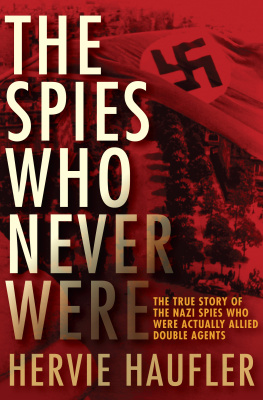THE editor is grateful for the advice of Judy Nokes of the National Archive at Kew for permission to reproduce the MI5 files KV 1/39 to KV 1/44.
MI5 underwent three significant wartime reorganisations. In August 1915 MO5A became MO5G and consisted of five sub-sections: G, G1, G2, G3 and G4. In October 1915 G was further sub-divided into five sections and two new sub-sections, with G2 acquiring G2(a) and G2(b).
In April 1916 G2 absorbed G2(a); and G2(b) and became G6. In September 1916 G3 became D Branch. In January 1917 G2 was sub-divided into four sub-sections. G5, previously Oriental Affairs, was redesignated E Branch. Simultaneously, G2(a) became G4. Later the same year G3 became H Branch.
G1: Sedition and peace propaganda
G2: Counter-Espionage
G2(a): Intercepted communications
G2(b): Port Control
G2(c): References from F Branch
G2(d): All other sources
G3: Photography, chemistry and technical research [later H Branch]
G4: Intercepted correspondence [previously G2(a)]
G5: Oriental Affairs, later Translations
G6: Special enquiries [previously G2(b)]
IN 1921 MI5s Director-General, Colonel Vernon Kell, authorised the preparation of a comprehensive account of his organisations operations during the Great War. His motives for doing so were partly to do with protecting his budget, primarily concerned with a struggle then raging within Whitehall to take control of the rival Secret Intelligence Service, and everything to do with the creation of a detailed record of what had been accomplished just before, and during the conflict, in relation to the then untold story of a massive German espionage offensive. It stands, therefore, as a unique record of a hitherto unknown dimension of Great Britains intelligence history, and is all the more remarkable because the original author also had the benefit of post-war interrogation reports, for example of the German spy-master Hans Eils and, most helpfully, access to the roster of 136 agents compiled by the Zweigstelle staff at Antwerp, a copy of which was seized by the Belgian Suret. Because this study would not be declassified for some ninety years, only those with a legitimate access to MI5s famous Registry could apply to read this extraordinary history. Even a century later, the declassified version still contains a few redacted passages, usually intended to conceal the true identity of a particular agent.
In pursuit of his various objectives, Kell commissioned an academic, Dr Lucy E. Farrer, to undertake the massive task of sifting through the records of hundreds of individual investigations, and then to create, in some ten volumes, each of more than two hundred pages of typescript, a veritable treasure trove of historical data which recorded MI5s extraordinary role in detecting and countering the Kaisers efforts to construct a large spy network in Great Britain from 1905 onwards, and then to infiltrate significant numbers of agents through neutral countries, principally the Netherlands, Belgium, Norway, Denmark and the United States.
A graduate of the Sorbonne, Farrer took her PhD in literary history and in 1908 published an account of the life and times of Claude de Sainliens, a Hugenot refugee who arrived in England in about 1554, taught French in London for more than thirty years, compiled one of the first English-French dictionaries, and worked in Lewisham under the alias Claudius Hollyband, an Anglicised version of his surname.
As a scholar, Farrer had plenty of intelligence experience, having served in MI5 during the war; she summarised MI5s files, and the manuscript of her volumes was typed in April 1921 under the supervision of a Colonel Jervis, and then in January 1922, passed by a Major Phillips to a civilian clerk, H. M. Cubb. The entire work was then archived.
In the early days Kells entry into the counter-espionage field was supported by a tiny staff, and undertook various duties, including liaising with the Home Office and military authorities, and acting as an interrogator of especially recalcitrant suspects. His outside investigations were conducted by two retired detectives, Superintendent William Melville and Inspector Regan, both formerly of Scotland Yards Special Branch. For enquires further afield, Kell relied upon local constabularies, with very mixed results as all too often the German spies spotted the somewhat inept, supposedly clandestine, surveillance. As will be seen, Kell was also dependent on cooperation from the GPO, and the interception of the mail and telegrams, on warrants issued by the Home Office, was a crucial instrument in countering foreign espionage.
As for the German spies, they were undoubtedly well-briefed, professionally managed and often quite colourful. Take, for example, Mrs Emily Riley of Sheerness and her four beautiful daughters, Nellie, Patricia, Edith and Emily, all of whom became romantically involved with German agents. Patricia married Karl Hentschel who embezzled a huge sum of money from the Germans and decamped with his wife to Australia, taking her sister Edith too. Emily, a shop assistant, would marry George Pelling, an artificer in the Royal Navy. Edith would be courted by Captain Friedel Fels, the German intelligence officer sent to find the absconding Hentschel. Connected to them were Ediths fianc Philip Penrose, who taught at the Royal Navys Mechanical Training Establishment at Chatham and later worked at the Woolwich Arsenal, and another Royal Navy non-commissioned officer, George C. Parrott, who was Patricias lover. Parrotts son-in-law, Gunner Francis Deacon, and his son Charles, were also serving in the Royal Navy and were implicated. This network, encompassing the strategically important naval bases at Chatham and Sheerness, was but one of several spy-rings never previously documented which monitored the movements of British warships, reported on naval exercises and researched the performance of new weapons and tactics adopted by the Royal Navy.
Although in recent years some historians have disparaged both a supposedly amateurish German effort to collect intelligence in England, and Whitehalls bungling response, it would seem that the Kaisers spy-masters, led by the very energetic Gustav Steinhauer, took a highly professional approach to building networks and even attempted in 1915 and 1916, through the use of Josef Marks and the double agents John de Heer, Marius Hoogendyk and Charles van Ekeren, to learn more about his adversary. Operating from Wesel, and later from various bases in neutral Holland, Steinhauer and his Naval Intelligence counterparts recruited a series of agents to travel to Great Britain under various covers to collect and transmit valuable intelligence. After the war MI5 received from the Belgian Suret a list of German agents enrolled in Antwerp, and the list is impressive, proving not only the guilt of suspects against whom there was insufficient evidence to bring a prosecution, but also demonstrated how the Germans adopted the ingenious method of selecting pairs of American journalists to travel to London and Amsterdam, having them exchange ostensibly innocuous telegrams as a means of conveying information about the movements of warships. MI5 probably would never have uncovered this particular scheme if it had not been for a British correspondent in New York who was approached and pretended, having taken advice from MI-1(c), to play along and participate.

